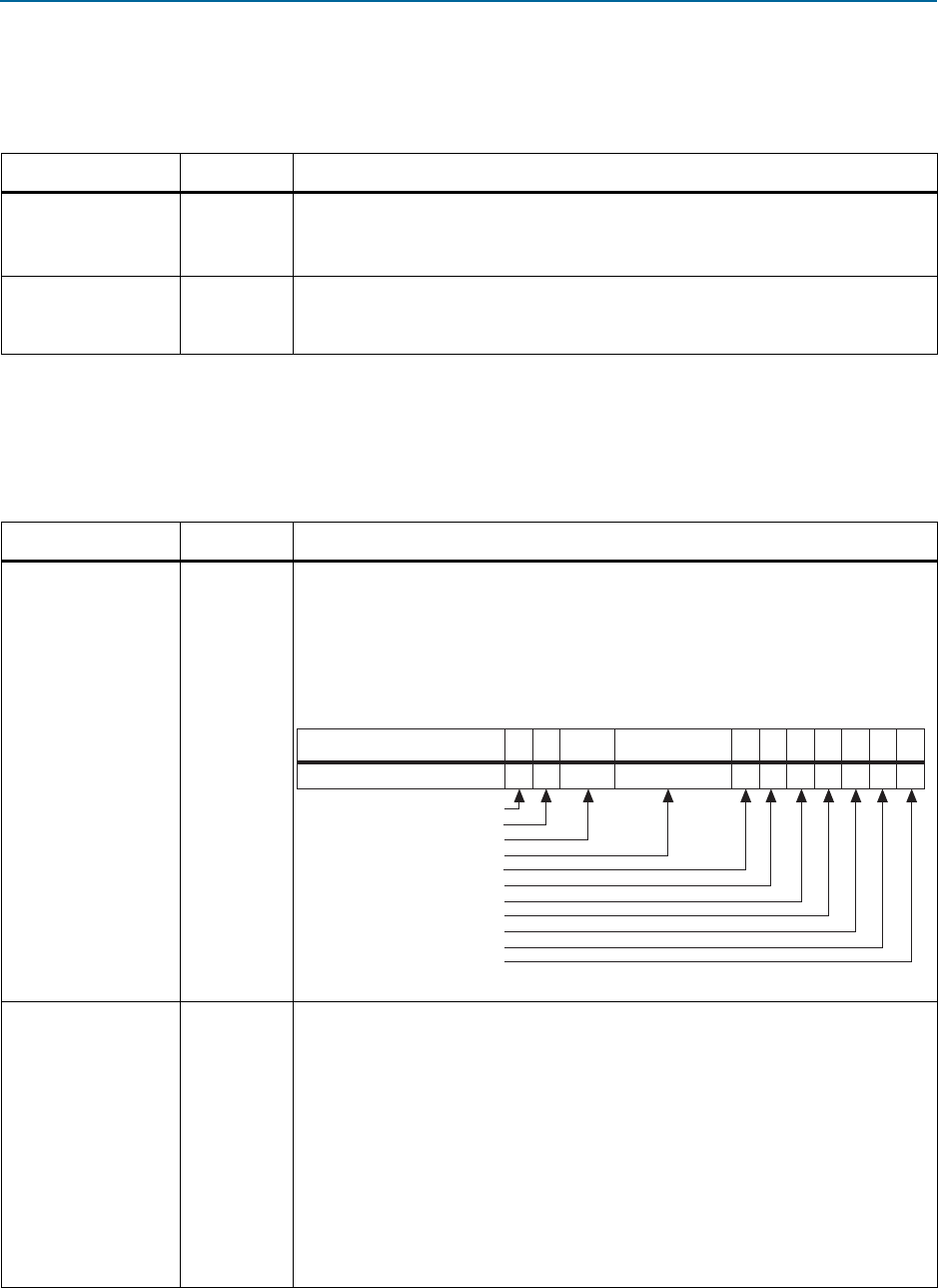User guide
Table Of Contents
- Cyclone V Hard IP for PCI Express User Guide
- Contents
- 1. Datasheet
- 2. Getting Started with the Cyclone V Hard IP for PCI Express
- 3. Getting Started with the Avalon-MM Cyclone Hard IP for PCI Express
- Running Qsys
- Customizing the Cyclone VHard IP for PCI Express IP Core
- Adding the Remaining Components to the Qsys System
- Completing the Connections in Qsys
- Specifying Clocks and Interrupts
- Specifying Exported Interfaces
- Specifying Address Assignments
- Simulating the Example Design
- Simulating the Single DWord Design
- Understanding Channel Placement Guidelines
- Adding Synopsis Design Constraints
- Creating a Quartus II Project
- Compiling the Design
- Programming a Device
- 4. Parameter Settings for the Cyclone V Hard IP for PCI Express
- 5. Parameter Settings for the Avalon-MM Cyclone V Hard IP for PCI Express
- 6. IP Core Architecture
- Key Interfaces
- Protocol Layers
- Multi-Function Support
- PCI Express Avalon-MM Bridge
- Avalon-MM Bridge TLPs
- Avalon-MM-to-PCI Express Write Requests
- Avalon-MM-to-PCI Express Upstream Read Requests
- PCI Express-to-Avalon-MM Read Completions
- PCI Express-to-Avalon-MM Downstream Write Requests
- PCI Express-to-Avalon-MM Downstream Read Requests
- Avalon-MM-to-PCI Express Read Completions
- PCI Express-to-Avalon-MM Address Translation for Endpoints
- Minimizing BAR Sizes and the PCIe Address Space
- Avalon-MM-to-PCI Express Address Translation Algorithm
- Single DWord Completer Endpoint
- 7. IP Core Interfaces
- Cyclone V Hard IP for PCI Express
- Avalon-MM Hard IP for PCI Express
- Physical Layer Interface Signals
- Test Signals
- 8. Register Descriptions
- Configuration Space Register Content
- Altera-Defined Vendor Specific Extended Capability (VSEC)
- PCI Express Avalon-MM Bridge Control Register Access Content
- Avalon-MM to PCI Express Interrupt Registers
- PCI Express Mailbox Registers
- Avalon-MM-to-PCI Express Address Translation Table
- Root Port TLP Data Registers
- Programming Model for Avalon-MM Root Port
- PCI Express to Avalon-MM Interrupt Status and Enable Registers for Root Ports
- PCI Express to Avalon-MM Interrupt Status and Enable Registers for Endpoints
- Avalon-MM Mailbox Registers
- Correspondence between Configuration Space Registers and the PCIe Spec 2.1
- 9. Reset and Clocks
- 10. Transaction Layer Protocol (TLP) Details
- 11. Interrupts
- Interrupts for Endpoints Using the Avalon-ST Application Interface
- Interrupts for Root Ports Using the Avalon-ST Interface to the Application Layer
- Interrupts for Endpoints Using the Avalon-MM Interface to the Application Layer
- Interrupts for End Points Using the Avalon-MM Interface with Multiple MSI/MSI-X Support
- 12. Optional Features
- 13. Flow Control
- 14. Error Handling
- 15. Transceiver PHY IP Reconfiguration
- 16. SDC Timing Constraints
- 17. Testbench and Design Example
- Endpoint Testbench
- Root Port Testbench
- Chaining DMA Design Examples
- Test Driver Module
- Root Port Design Example
- Root Port BFM
- BFM Procedures and Functions
- 18. Debugging
- A. Transaction Layer Packet (TLP) Header Formats
- Additional Information

4–6 Chapter 4: Parameter Settings for the Cyclone V Hard IP for PCI Express
Port Functions
Cyclone V Hard IP for PCI Express December 2013 Altera Corporation
User Guide
Link
Table 4–4 describes the Link Capabilities parameters.
Slot
Table 4–12 describes the Slot Capabilities parameters.
Table 4–4. Link Capabilities 0x090
Parameter Value Description
Link port number
0x01
(default
value)
Sets the read-only value of the port number field in the
Link Capabilities
register. This is an 8-bit field which you can specify.
Slot clock
configuration
On/Off
When On, indicates that the Endpoint or Root Port uses the same physical reference
clock that the system provides on the connector. When Off, the IP core uses an
independent clock regardless of the presence of a reference clock on the connector.
Table 4–5. Slot Capabilities 0x094
Parameter Value Description
Use Slot register On/Off
The slot capability is required for Root Ports if a slot is implemented on the port. Slot
status is recorded in the
PCI
Express
Capabilities
Register
. This parameter is
only valid for Root Port variants.
Defines the characteristics of the slot. You turn this option on by selecting. The
various bits of the Slot Capability register have the following definitions:
Slot power scale
0–3
Specifies the scale used for the Slot power limit. The following coefficients are
defined:
■ 0 = 1.0x
■ 1 = 0.1x
■ 2 = 0.01x
■ 3 = 0.001x
The default value prior to hardware and firmware initialization is b’0 or 1.0x. Writes
to this register also cause the port to send the
Set_Slot_Power_Limit
Message.
Refer to Section 6.9 of the
PCI Express Base Specification Revision 2.1 for more
information.
31 19 18 17 16 15 14
7
65
Physical Slot Number
No Command Completed Support
Electromechanical Interlock Present
Slot Power Limit Scale
Slot Power Limit Value
Hot-Plug Capable
Hot-Plug Surprise
Power Indicator Present
Attention Indicator Present
MRL Sensor Present
Power Controller Present
Attention Button Present
04321










